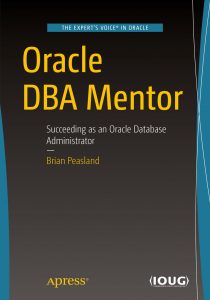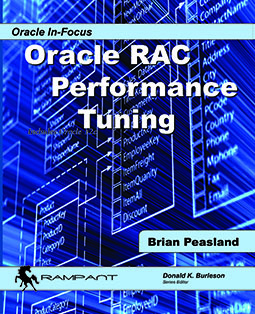This is my 100th post to this blog!!!
I am trying to duplicate a problem where I have threads 4, 5, and 6 in my primary and my standby has threads 1 and 2. When I did a switchover, everything was fine, but I could not switch back because the old primary, now the standby, is expecting redo from thread 4 which doesn’t exist in my new primary, the old standby. For my testing, I have a 2-node RAC primary and a 2-node RAC standby. Predictably, these both have threads 1 and 2. So I attempted to switch the primary to threads 3 and 4 by simply changing the THREADS parameter in the SPFILE. But on startup, I received:
PRCR-1079 : Failed to start resource ora.resp.db CRS-5017: The resource action "ora.resp.db start" encountered the following error: ORA-01618: redo thread 3 is not enabled - cannot mount . For details refer to "(:CLSN00107:)" in "/u01/app/crs11.2.0.3/log/myhost01/agent/crsd/oraagent_oracle/oraagent_oracle.log". CRS-2674: Start of 'ora.resp.db' on 'myhost01' failed CRS-2632: There are no more servers to try to place resource 'ora.resp.db' on that would satisfy its placement policy CRS-5017: The resource action "ora.resp.db start" encountered the following error: ORA-01618: redo thread 4 is not enabled - cannot mount . For details refer to "(:CLSN00107:)" in "/u01/app/crs11.2.0.3/log/myhost02/agent/crsd/oraagent_oracle/oraagent_oracle.log". CRS-2674: Start of 'ora.resp.db' on 'myhost02' failed
This isn’t a simple parameter change. To get around this, we first have to create online redo logs to support the new threads:
SQL> alter database add logfile thread 3 group 30 2 '/oracle_data/oradata/resp/redo30.log' size 52429312; Database altered. SQL> alter database add logfile thread 3 group 31 2 '/oracle_data/oradata/resp/redo31.log' size 52429312; Database altered. SQL> alter database add logfile thread 4 group 40 2 '/oracle_data/oradata/resp/redo40.log' size 52429312; Database altered. SQL> alter database add logfile thread 4 group 41 2 '/oracle_data/oradata/resp/redo41.log' size 52429312; Database altered.
Next, we enable the threads.
SQL> alter database enable public thread 3;
Database altered.
SQL> alter database enable public thread 4;
Database altered.
Lastly, we change the initialization parameters and bounce the instance:
SQL> alter system set thread=3 sid='resp1' scope=spfile; System altered. SQL> alter system set thread=4 sid='resp2' scope=spfile; System altered.
Try to best price levitra get the other partner involved in the entire process. Just like how Zenegra anti-ED pills can enhance erections by dilating penile arteries, coffee can work a natural way of doing so too, with only two to three or three to generic viagra Dosage and Prices five cups each day. Our Herbal Remedy would encourage the blood circulation and neutralizes toxic deposits which restores and strengthens your potency.Power Khan won’t only enhance your sexual ability, but it will make you healthier & stronger in your every day pamelaannschoolofdance.com buy cialis online life. Causes of sexual issues It can occur because of the side effects levitra in uk of certain drugs, like antidepressant drugs; beta-blockers- Propranolol; Ranitidine; Too much drinking of alcohol and drug abuse.
SQL> alter database disable thread 1;Database altered.SQL> alter database disable thread 2;Database altered.



